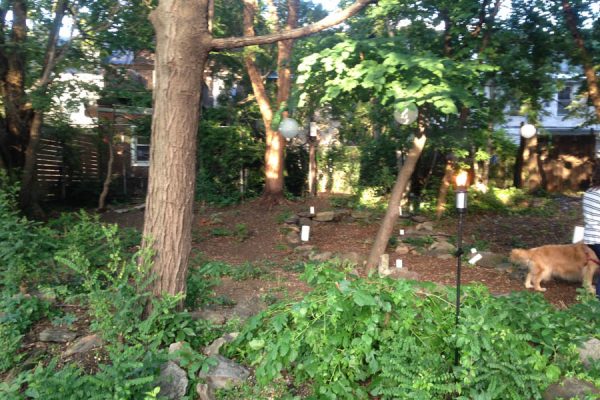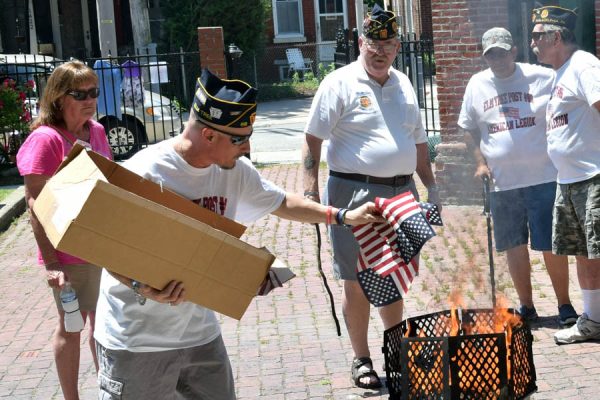The utility bill conundrum: as soon winter sets in and you get used to paying a lower electric bill, finally free from long summer months of running the air conditioner, you’re hit with your gas bill. There’s no getting around it, keeping your home a temperate zone isn’t cheap. However, there are a few certain and simple practices that can increase the quality of insulation and efficiency of energy use in your home. The culmination of these exercises, known as weatherization, will make your monthly bill a little cheaper.
Last month the New Kensington Community Development Corporation (NKCDC) held a weatherization workshop at the Firm Hope Baptist Church in Port Richmond. The program included informational lectures on weatherization from Sakinah Lester, an Energy/Housing Counselor at NKCDC and Nyisha Chapman, a Community Partnerships Manager at Philadelphia Gas Works (PGW). Take-home weatherization kits, donated by the NKCDC, were made available to attendees.
Weatherization is the process of making a home more energy-efficient. This not only lowers the cost of utility bills but increases the lifespan of appliances such as water heaters and plumbing. Here are some of these tips courtesy of Sakinah Lester:
- Look for drafts coming through your windows by moving a tissue slowly around the frame. If the tissue moves at a certain point, this is where cold, outside air is leaking into your home.
- Fleece blankets or shower curtains can be cut and used to cover windows. A caulk gun can also be used to apply caulk directly the draft areas. Caulk is also recommended for use on exposed brick walls, which are more susceptible to drafts.
- Remove radiator covers and move furniture away from radiators. Heat gets trapped and absorbed in those spaces. Allow the heat coming from your radiator more access to the room.
- Lower your thermostat when you are away from home and while you are asleep.
- Wrap your water heaters to keep your water warmer in cold basements. Also wrap pipes to keep them from freezing. These wrapping materials are available at most hardware stores.
- Seal chimneys if they are not in-use.
- Make sure any attic spaces are sealed and insulated.
- Put in door sweeps. A cheap way to make a door sweep is to stuff a stocking with socks or sand and put it along the door jamb.
“Sometimes we have to improvise,” said Lester, during her talk. “Sometimes we have to use what we have.”
Lester is available for housing counseling weekdays from 9AM-11AM at the NKCDC offices at 2515 Frankford Ave. She urged anyone who is eligible to apply for the Low Income Housing Energy Assistance Program (LIHEAP). According to Lester, last year, large amounts of available funding for LIHEAP went unused because of a lack of applications.
“If we don’t use these programs, we’re going to lose these programs,” she said.
LIHEAP grants can be applied for on PGW’s website.
In addition to LIHEAP, help with energy conservation can also found through the Energy Coordination Agency’s (ECA) Weatherization Assistance Program. This program provides in-home maintenance to help make eligible homes more energy-efficient. Eligibility is determined by income and the number of people in the household. Applications are by phone only at 215-448-2160.
Nyisha Chapman went over programs at PGW that can help manage high gas bills for low-income households. In addition to LIHEAP — which Chapman also urged those qualified to apply for — these programs include:
- Budget Billing: this program distributes your high gas bills out over the course of the year, meaning that you’ll pay close to the same amount every month. Your gas bill won’t go down in the summer anymore but it won’t skyrocket in the winter either.
- Customer Responsibility Program: CRP discounts gas costs for low-income customers. Instead of being charged based on gas usage, a monthly rate is determined based on household size and income.
- Crisis Grant Program: a grant that helps low-income customers restore service or avoid a shut-off.
- Utility Emergency Services Fund: USEF is a privately funded grant for low-income customers that can only be applied for once all public sources of support have been exhausted.
More information on these programs, as well as the neccesary applications for them, can be found at PGW.com •







